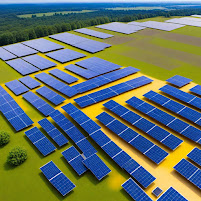Too many solar panels? Environmental impact study and potential limitations
The world's transition to renewable energy sources is gaining momentum, and solar energy is at the forefront. Solar panels, harnessing the sun's energy, offer a promising solution to reducing our dependence on fossil fuels and mitigating climate change. However, as with any technology, it is very important to assess the potential environmental consequences of deploying large-scale solar arrays.
Advantages of solar panels:
Clean energy: Solar panels produce electricity without emitting pollutants or greenhouse gases, unlike fossil fuels, contributing to a cleaner environment and combating climate change.
Environmentally Friendly: Solar energy is a renewable resource that is replenished naturally, unlike finite fossil fuels. This ensures a stable energy supply for future generations.
Lower Energy Costs: Solar panels can significantly lower energy bills for homeowners and businesses, providing long-term financial savings.
Cons of solar panels:
Land use: Large-scale solar power plants require large areas of land, potentially affecting natural habitats and ecosystems. Careful site selection and biodiversity considerations are important.
Production emissions. The manufacturing process of solar panels involves energy consumption and can lead to greenhouse gas emissions. However, these emissions are outweighed by the net energy produced over the lifetime of the panel.
End-of-Life Disposal: Solar panels contain hazardous materials and improper disposal can lead to environmental pollution. Effective recycling programs are critical.
Limitations of solar panels:
Intermittency: Solar power is intermittent, relying on the availability of sunlight. Energy storage solutions are essential to ensure a sustainable supply.
Land Use Efficiency: Solar cells have different energy conversion efficiencies, so more land is required to produce the same amount of energy as other sources.
The impact of production on the environment. The manufacturing process of solar panels has an impact on the environment, but technological advances are reducing this impact.
Solar panels offer a promising path to a sustainable energy future. However, it is important to recognize and address the potential environmental challenges associated with the deployment of large-scale solar panels. By carefully considering land use, promoting responsible production methods and developing efficient energy storage solutions, we can maximize the benefits of solar energy while minimizing its impact on the environment.




Comments
Post a Comment